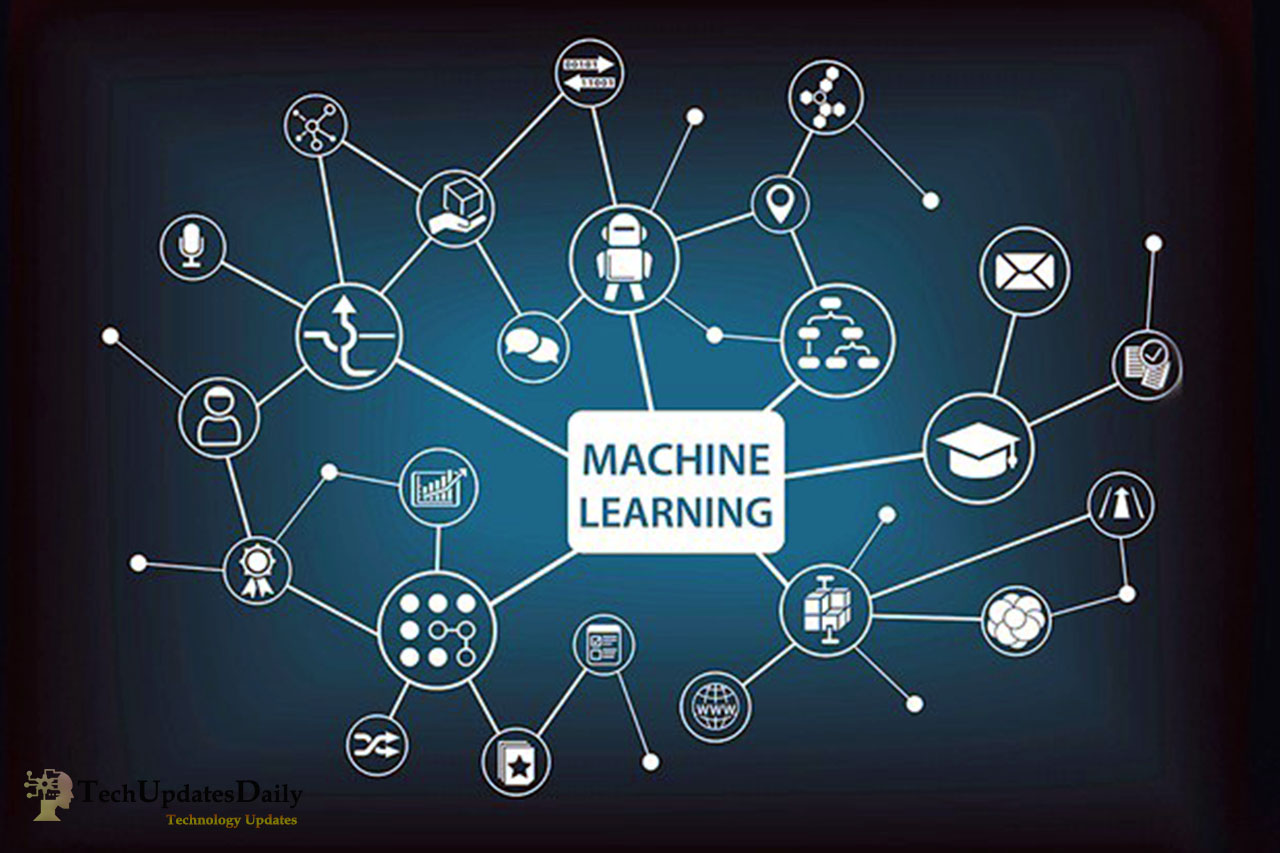Machine learning (ML) is rapidly transforming the world as we know it, empowering computers to learn from data without explicit programming. This transformative technology has far-reaching applications, from natural language processing to predictive analytics, and holds immense promise for shaping the future.
In this comprehensive guide, we delve into the fundamentals of ML, exploring its different types, applications, challenges, and future prospects. Get ready to unravel the mysteries of ML and discover its potential to revolutionize industries and improve our lives.
Introduction
Machine Learning (ML) is a subfield of artificial intelligence (AI) that provides computers with the ability to learn without being explicitly programmed. It involves training models using large amounts of data, allowing computers to make predictions or decisions without human intervention.The purpose of ML is to automate tasks that would otherwise require manual effort, such as data analysis, image recognition, and natural language processing.
By leveraging ML, computers can identify patterns and relationships in data, enabling them to perform tasks with a level of accuracy and efficiency that rivals human experts.
Types of Machine Learning
Machine learning algorithms can be categorized into three main types based on the nature of the data they are trained on and the feedback they receive during training: supervised learning, unsupervised learning, and reinforcement learning.
Supervised Learning
In supervised learning, the machine learning algorithm is trained on a dataset that has been labeled with the correct output for each input. This allows the algorithm to learn the relationship between the input and output data and make predictions on new, unseen data.
Some common examples of supervised learning tasks include:
- Predicting the price of a house based on its features (e.g., square footage, number of bedrooms, location)
- Classifying emails as spam or not spam based on their content
- Recognizing handwritten digits based on their pixel values
There are many different methods that can be used for supervised learning, including:
- Linear regression
- Logistic regression
- Decision trees
- Support vector machines
- Neural networks
Unsupervised Learning
In unsupervised learning, the machine learning algorithm is trained on a dataset that has not been labeled with the correct output for each input. This means that the algorithm must learn the structure of the data on its own, without any guidance from a human.
Some common examples of unsupervised learning tasks include:
- Clustering data points into different groups based on their similarity
- Finding the principal components of a dataset
- Generating new data that is similar to the training data
There are many different methods that can be used for unsupervised learning, including:
- K-means clustering
- Hierarchical clustering
- Principal component analysis
- Generative adversarial networks
Reinforcement Learning, Machine learning
In reinforcement learning, the machine learning algorithm learns by interacting with its environment. The algorithm receives a reward or penalty for its actions, and it uses this feedback to learn which actions lead to the best outcomes.
Some common examples of reinforcement learning tasks include:
- Training a robot to walk
- Training a self-driving car to navigate the road
- Training a game-playing agent to win a game
There are many different methods that can be used for reinforcement learning, including:
- Q-learning
- SARSA
- Deep reinforcement learning
Applications of Machine Learning
Machine learning has a wide range of applications across various industries. Some of the key areas where ML is extensively used include natural language processing (NLP), computer vision, and predictive analytics.
Natural Language Processing (NLP)
NLP is a subfield of ML that deals with the interaction between computers and human (natural) languages. ML algorithms are used to process, understand, and generate natural language text.
- Machine Translation:ML algorithms are used to translate text from one language to another, enabling global communication and information sharing.
- Chatbots:ML-powered chatbots provide customer service, answer questions, and engage in conversations with users, simulating human-like interactions.
- Text Summarization:ML algorithms can automatically summarize large blocks of text, extracting key points and generating concise summaries.
Computer Vision
Computer vision is a subfield of ML that deals with the processing and understanding of digital images and videos. ML algorithms are used to identify objects, classify images, and interpret visual data.
- Object Detection:ML algorithms can detect and identify objects within images and videos, enabling applications such as facial recognition, surveillance, and self-driving cars.
- Image Classification:ML algorithms can classify images into different categories, such as animals, vehicles, or landscapes, based on their visual features.
- Medical Imaging:ML algorithms are used in medical imaging to analyze X-rays, MRI scans, and other medical images, assisting in disease diagnosis and treatment planning.
Predictive Analytics
Predictive analytics is a subfield of ML that focuses on using historical data to predict future outcomes. ML algorithms are used to identify patterns, trends, and relationships in data to make predictions and forecasts.
- Customer Churn Prediction:ML algorithms can predict which customers are likely to cancel their subscriptions or services, enabling businesses to implement targeted retention strategies.
- Fraud Detection:ML algorithms can identify fraudulent transactions in financial data, protecting consumers and businesses from financial losses.
- Weather Forecasting:ML algorithms are used to predict weather patterns and forecast future weather conditions, providing valuable information for industries such as agriculture, transportation, and emergency response.
Challenges in Machine Learning

Machine learning, despite its transformative potential, faces several challenges that hinder its widespread adoption and effectiveness. These challenges span various aspects of the machine learning lifecycle, from data collection and preparation to model selection and evaluation.
Data Collection and Preparation
Data is the lifeblood of machine learning algorithms. However, collecting and preparing data for machine learning can be a daunting task. Challenges include:
- Data Availability:Acquiring sufficient data, especially for complex tasks, can be challenging. Data may be expensive to collect or simply unavailable.
- Data Quality:Ensuring the accuracy, consistency, and completeness of data is crucial. Data cleaning and preprocessing can be time-consuming and resource-intensive.
- Data Bias:Data may be biased towards certain groups or outcomes, leading to models that perpetuate existing biases.
Solutions:
- Explore alternative data sources, such as synthetic data generation or data augmentation techniques.
- Implement robust data cleaning and preprocessing pipelines to handle missing values, outliers, and inconsistencies.
- Employ data validation and verification techniques to identify and mitigate biases.
Model Selection and Evaluation
Selecting and evaluating machine learning models is a critical step in the machine learning process. Challenges include:
- Model Complexity:Choosing the right model complexity is crucial. Overly simple models may fail to capture the underlying data patterns, while overly complex models may lead to overfitting.
- Model Evaluation Metrics:Selecting appropriate evaluation metrics is essential to assess model performance. Different metrics may provide different insights.
- Data Overfitting:Models can overfit the training data, resulting in poor generalization to unseen data.
Guidelines:
- Consider the trade-off between model complexity and performance using techniques like cross-validation.
- Use multiple evaluation metrics to provide a comprehensive assessment of model performance.
- Employ regularization techniques and early stopping to prevent overfitting.
Overfitting and Underfitting
Overfitting and underfitting are two common challenges in machine learning.
- Overfitting:Occurs when a model captures too much noise in the training data, resulting in poor generalization to unseen data.
- Underfitting:Occurs when a model fails to capture the underlying patterns in the data, leading to poor performance on both training and unseen data.
Techniques:
- Regularization:Regularization techniques, such as L1 and L2 regularization, penalize model complexity, reducing overfitting.
- Early Stopping:Early stopping monitors model performance on a validation set and stops training when performance starts to decline, preventing overfitting.
- Data Augmentation:Data augmentation techniques, such as random sampling and feature engineering, increase the effective size of the training data, reducing overfitting.
Future of Machine Learning

Machine learning (ML) is rapidly evolving, and its future holds immense promise. As we move forward, we can expect to see even more innovative and groundbreaking applications of ML across a wide range of industries.
Emerging Trends in ML
Some of the most exciting emerging trends in ML include:
- Generative AI:This type of AI can create new data or content from scratch, such as generating realistic images, text, or music.
- Quantum machine learning:This field combines ML with quantum computing to solve complex problems that are intractable for classical computers.
- Edge AI:This type of ML is deployed on devices at the edge of the network, such as smartphones or self-driving cars, enabling real-time decision-making.
Ethical Considerations in ML
As ML becomes more powerful, it is important to consider the ethical implications of its use. Some of the key ethical considerations include:
- Bias:ML models can be biased if they are trained on data that is not representative of the population they are intended to serve.
- Privacy:ML models can collect and store sensitive data, which raises concerns about privacy and data security.
- Accountability:It is important to ensure that ML models are accountable and that there is a clear understanding of who is responsible for their actions.
By addressing these ethical considerations, we can ensure that ML is used in a responsible and ethical manner.
Final Wrap-Up: Machine Learning

As ML continues to evolve, it presents both tremendous opportunities and challenges. By addressing ethical concerns, investing in data quality, and fostering collaboration, we can harness the power of ML responsibly and create a future where humans and machines work together to solve complex problems and drive progress.
Detailed FAQs
What is the difference between supervised and unsupervised learning?
Supervised learning involves training a model on labeled data, where the input and output are known. Unsupervised learning, on the other hand, deals with unlabeled data and aims to discover hidden patterns or structures.
What are the challenges in implementing ML models?
Common challenges include data collection and preparation, model selection and evaluation, and overfitting and underfitting. Addressing these challenges requires careful data management, rigorous model validation, and techniques to optimize model performance.
What are the ethical considerations in ML development?
ML algorithms can exhibit biases or perpetuate unfairness if not developed responsibly. Ethical considerations include data privacy, transparency, accountability, and ensuring that ML systems align with societal values.
